Abstract
The physiological and physical components of the feedback loop involving intercellular CO2 concentration (ci) and stomata are identified. The loop gain (G) is a measure of the degree of homeostasis in a negative feedback loop [the expression 1/(1-G) represents the fraction to which feedback reduces a perturbance]. Estimates are given for the effects of G on responses of stomata and ci to changes in ambient CO2 concentration, light intensity, and perturbations in the water relations of a leaf. At normal ambient CO2 concentration, the gain of the loop involving stomatal conductance and ci was found to be −2.2 in field-grown Zea mays, −3.6 if plants of this species were grown in a growth chamber, and zero in well watered Xanthium strumarium in the vegetative state.
Full text
PDF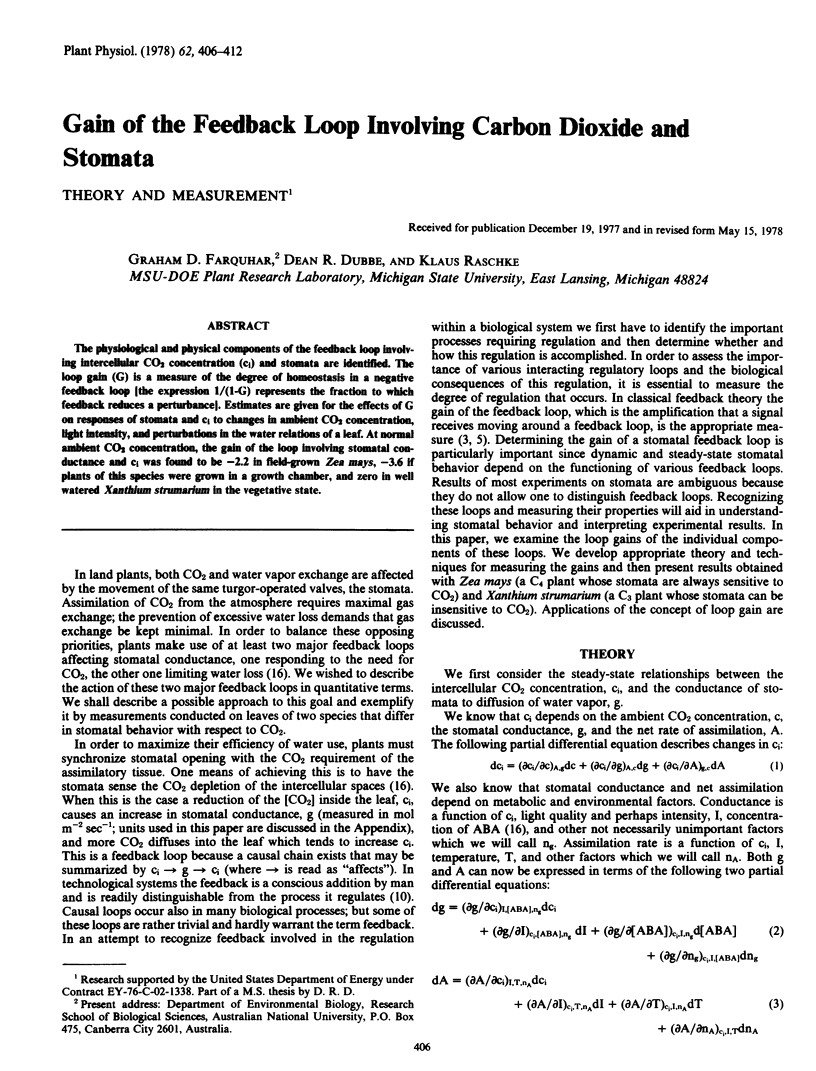
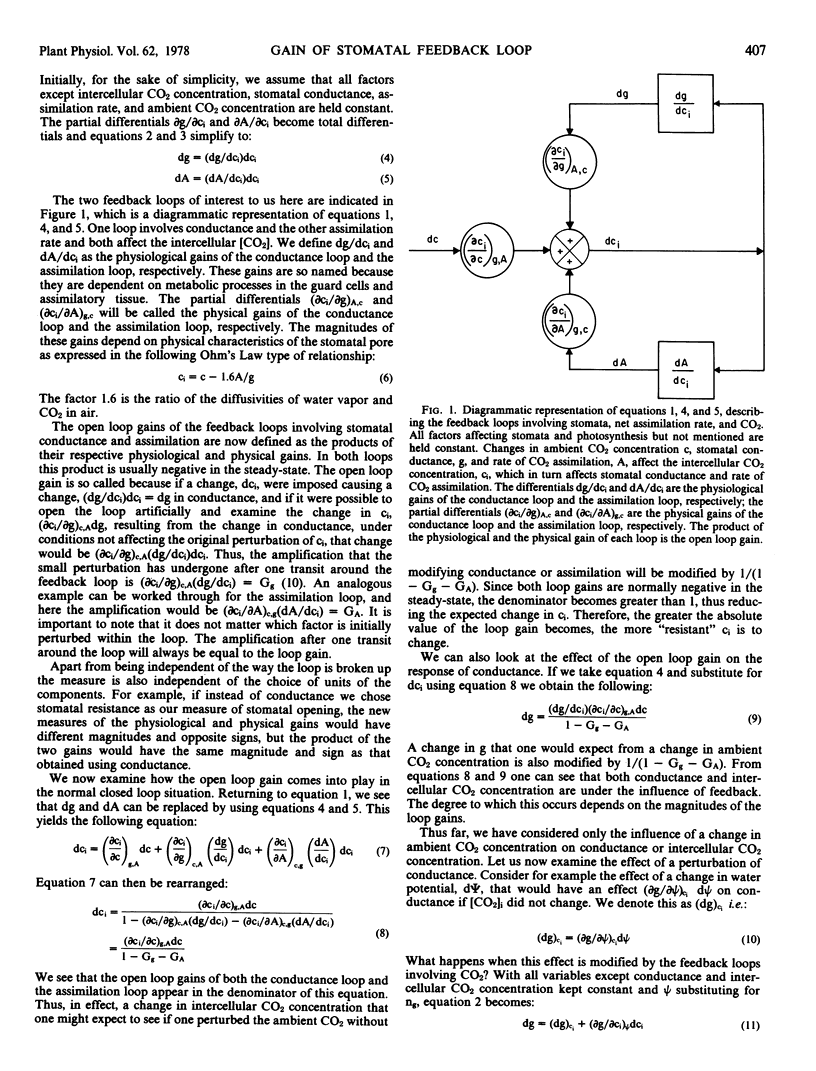
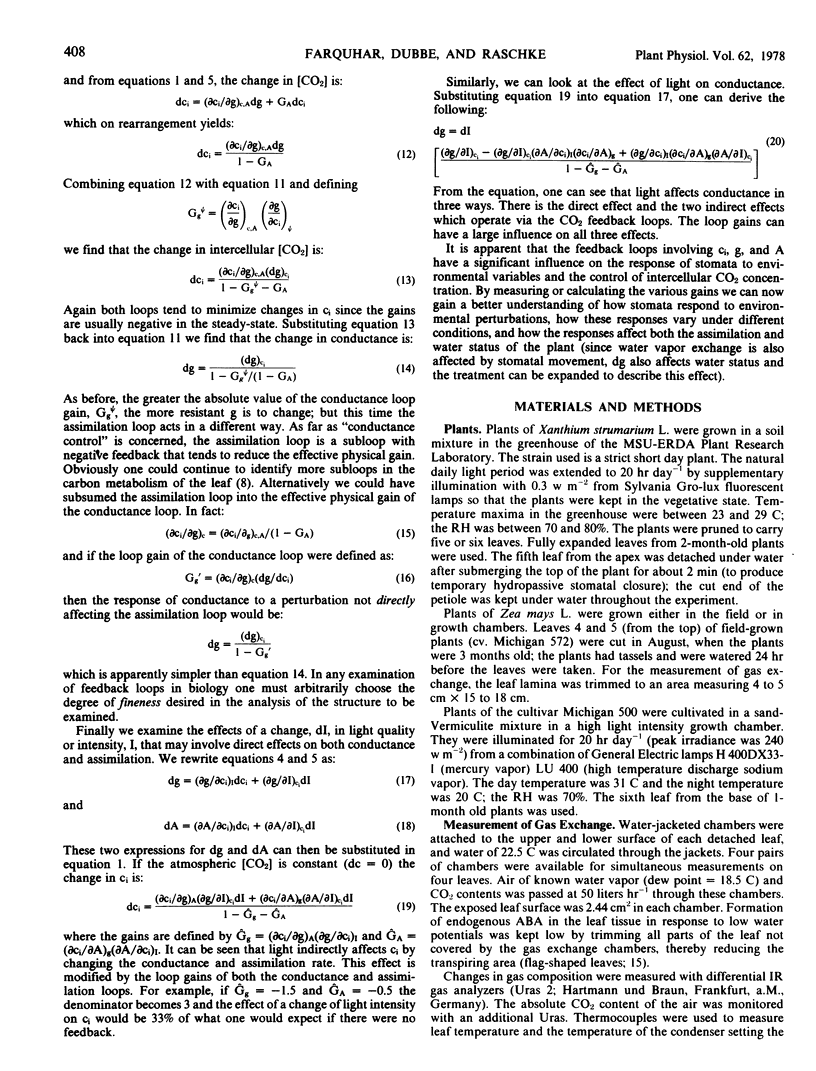
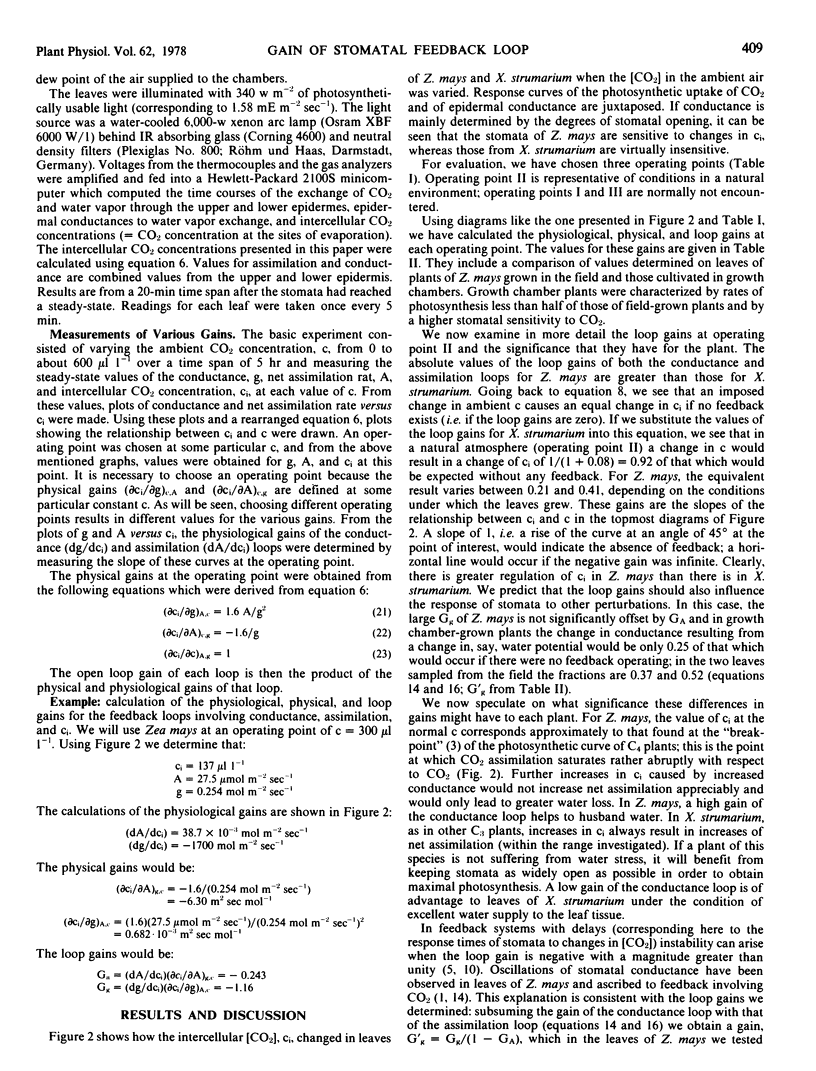
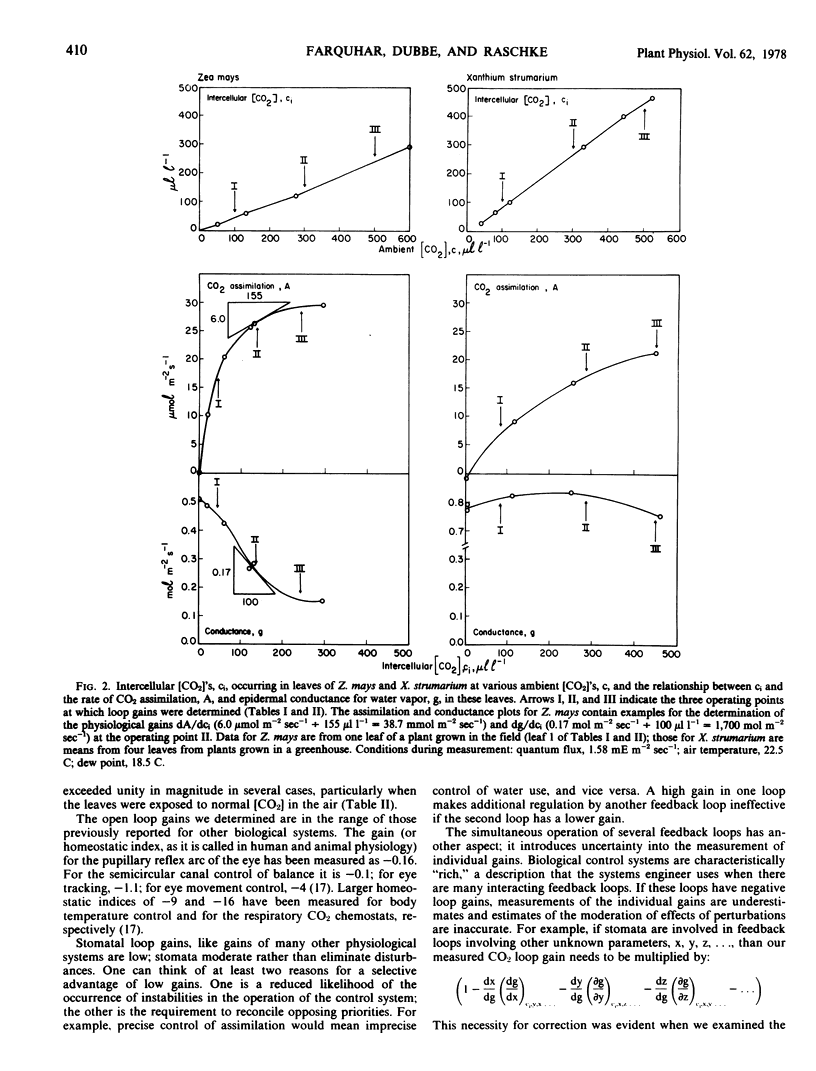
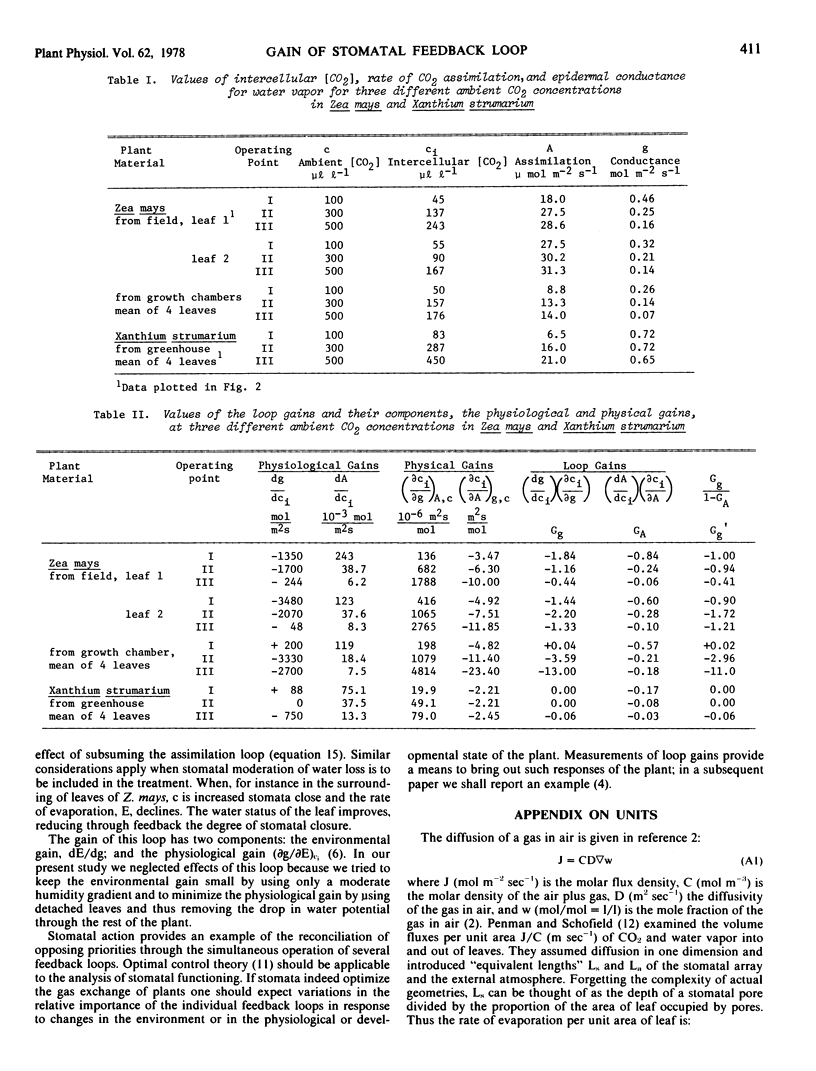
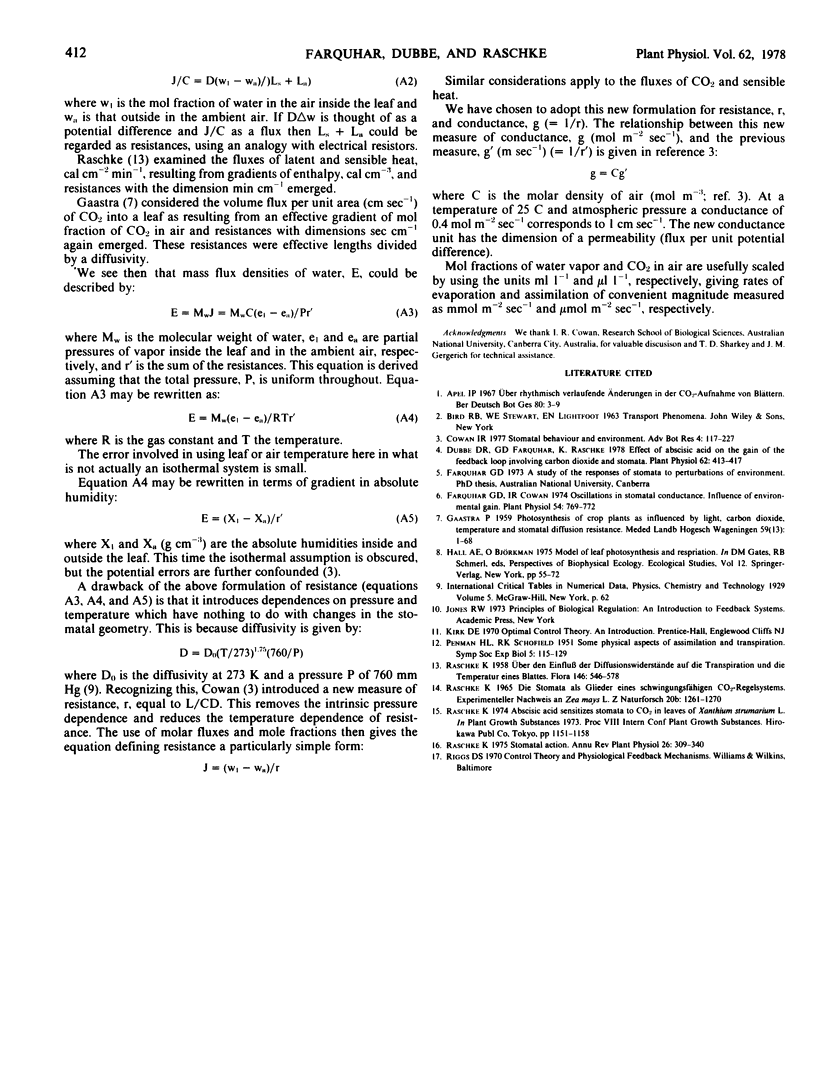
Selected References
These references are in PubMed. This may not be the complete list of references from this article.
- Dubbe D. R., Farquhar G. D., Raschke K. Effect of abscisic Acid on the gain of the feedback loop involving carbon dioxide and stomata. Plant Physiol. 1978 Sep;62(3):413–417. doi: 10.1104/pp.62.3.413. [DOI] [PMC free article] [PubMed] [Google Scholar]
- Farquhar G. D., Cowan I. R. Oscillations in stomatal conductance: the influence of environmental gain. Plant Physiol. 1974 Nov;54(5):769–772. doi: 10.1104/pp.54.5.769. [DOI] [PMC free article] [PubMed] [Google Scholar]


